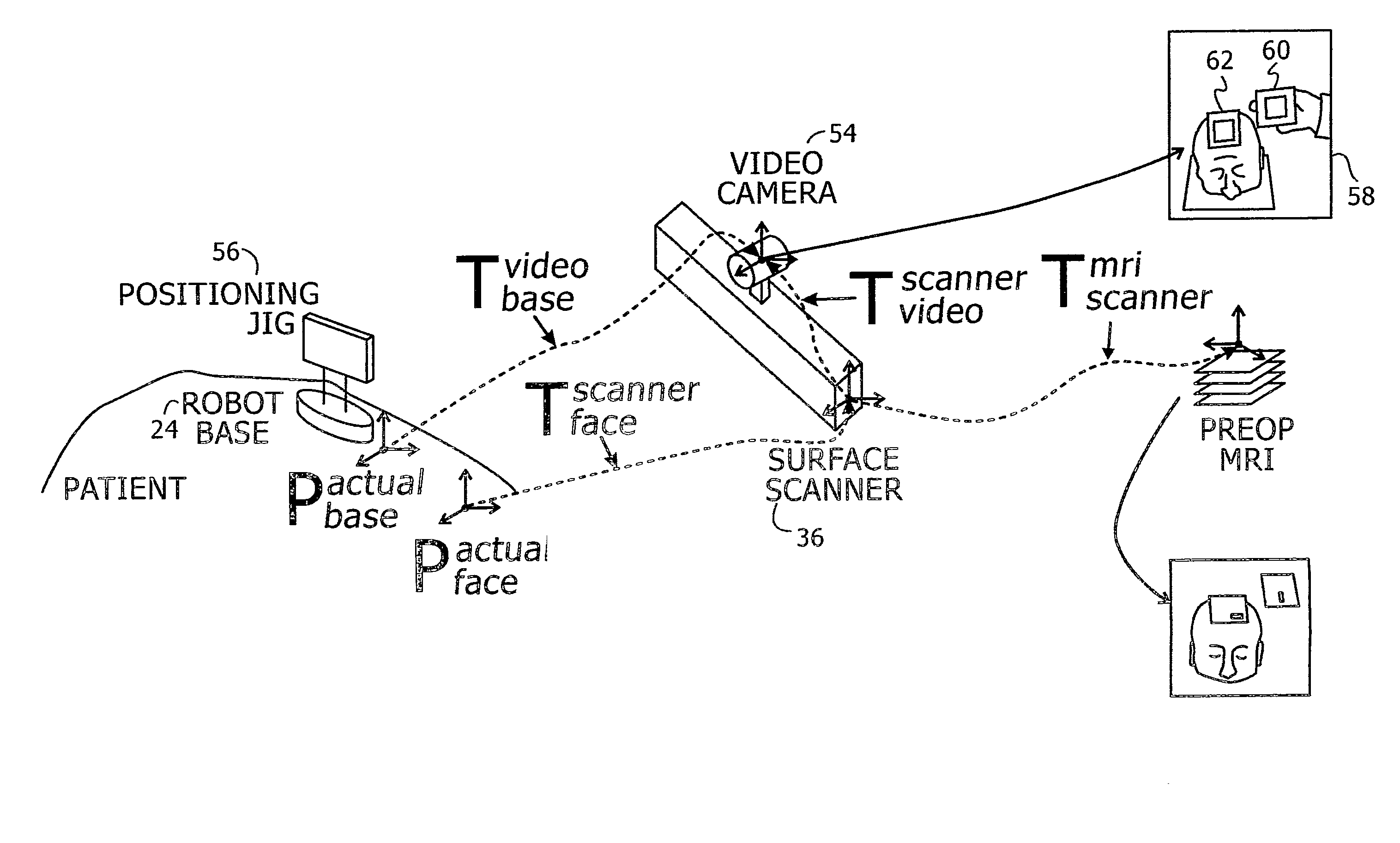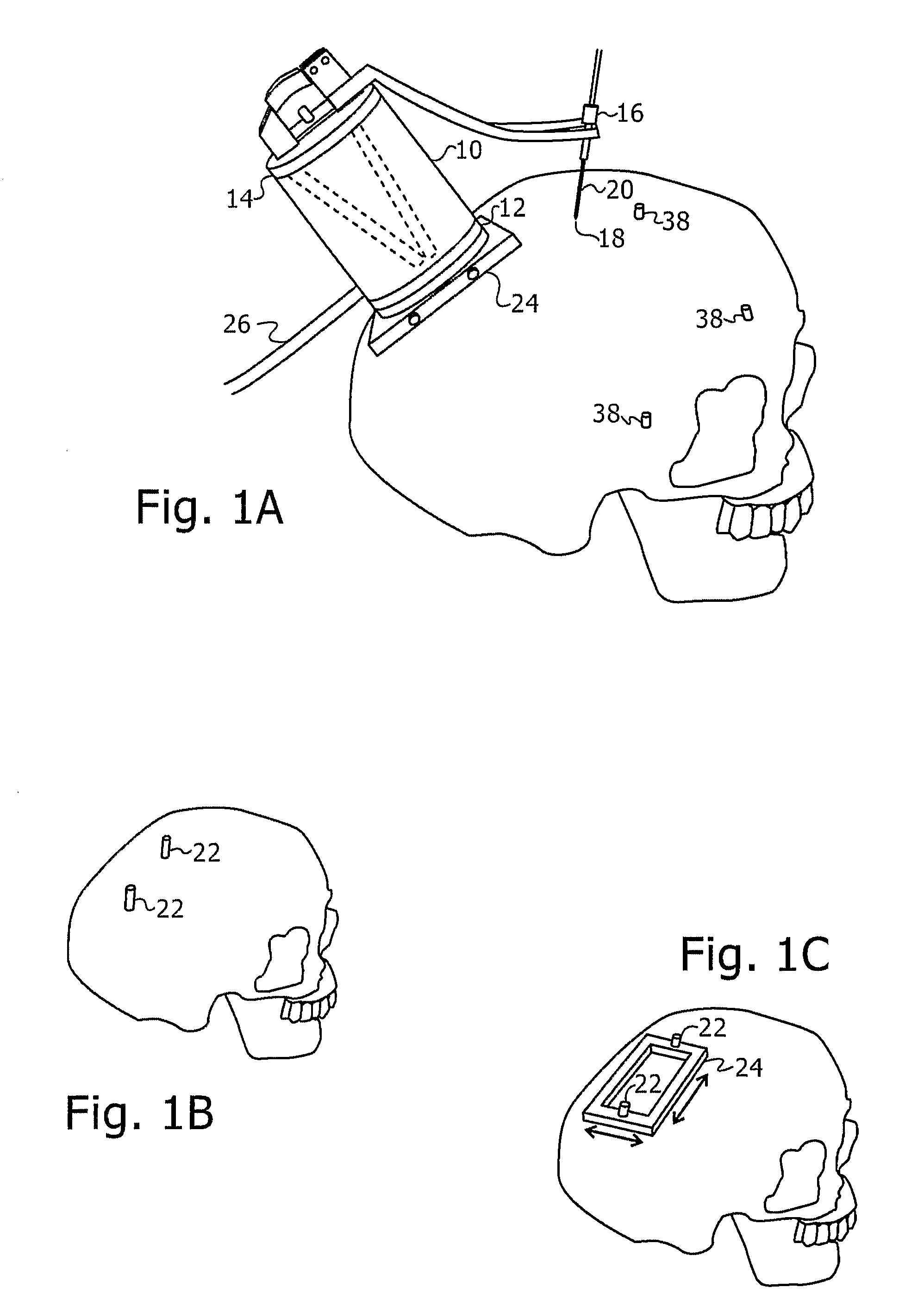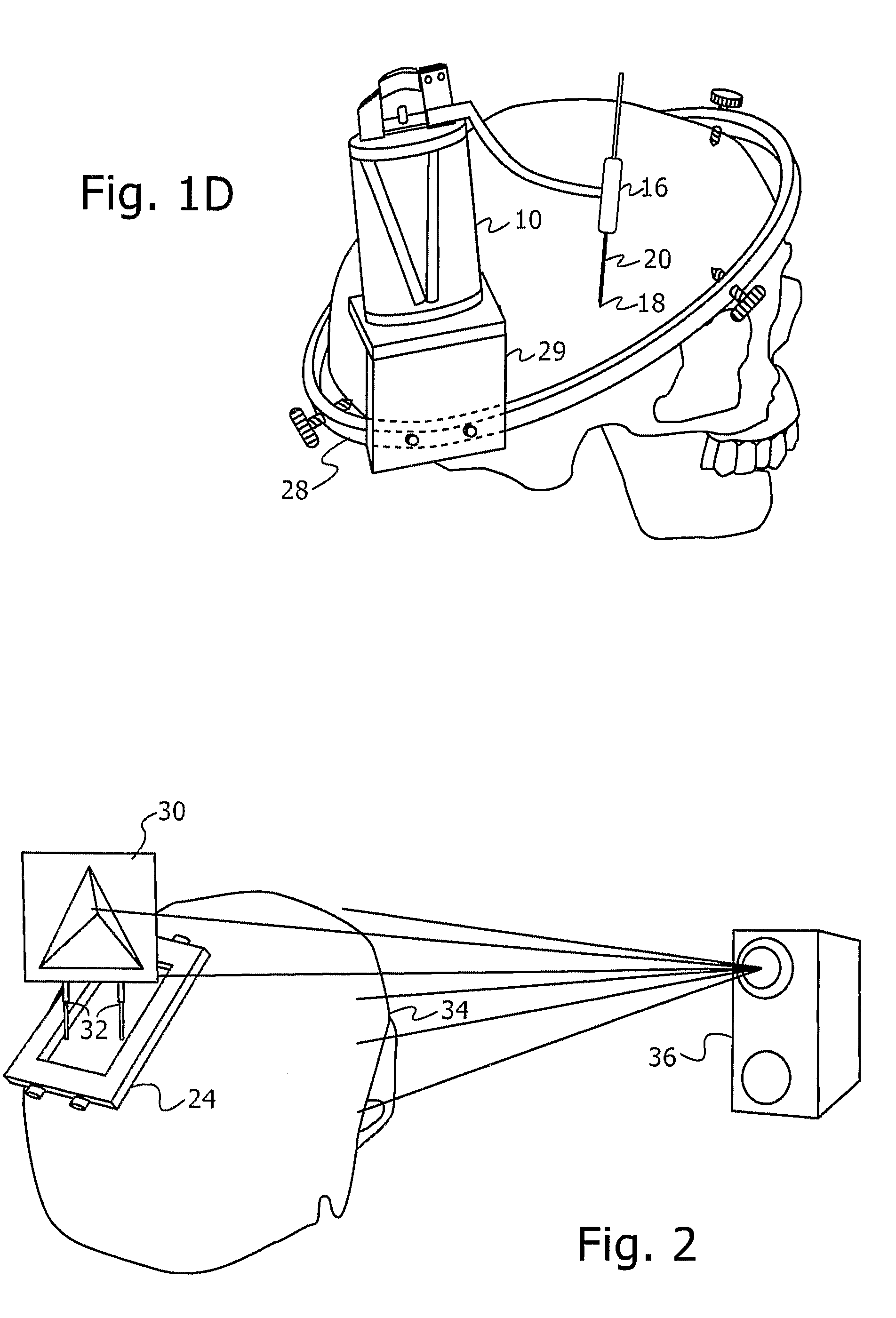Image guided robotic system for keyhole neurosurgery
a robotic system and keyhole technology, applied in the field of robotics aided surgery, can solve the problems of inaccuracy in matching facial features between these two operations, and achieve the effects of accurate scan, potentially more accurate, and accurate plotting during scanning
- Summary
- Abstract
- Description
- Claims
- Application Information
AI Technical Summary
Benefits of technology
Problems solved by technology
Method used
Image
Examples
Embodiment Construction
[0076]Reference is now made to FIG. 1A, which illustrates schematically a miniature robot 10 in use in an image-guided robotic keyhole neurosurgery system according to a preferred embodiment of the present invention. The miniature robot 10 preferably has a parallel structure with six degrees of freedom, though robots with less degrees of freedom can also be used, and it is preferably directly mounted on the patient bony structure or on a fixed stand near the surgical site.
[0077]In FIGS. 1A to 1D and in some of the other drawings of this application, the robot is shown mounted on a model skull, as used in experimental studies of the system, though it is to be understood that in the real life situation, the head of the patient takes the place of the skull. A preferred type of miniature robot for use in the system of the present invention has been described in U.S. Pat. No. 6,837,892 for “Miniature bone-mounted surgical robot” to M. Shoham, and is supplied by Mazor Surgical Technologie...
PUM
 Login to View More
Login to View More Abstract
Description
Claims
Application Information
 Login to View More
Login to View More - R&D
- Intellectual Property
- Life Sciences
- Materials
- Tech Scout
- Unparalleled Data Quality
- Higher Quality Content
- 60% Fewer Hallucinations
Browse by: Latest US Patents, China's latest patents, Technical Efficacy Thesaurus, Application Domain, Technology Topic, Popular Technical Reports.
© 2025 PatSnap. All rights reserved.Legal|Privacy policy|Modern Slavery Act Transparency Statement|Sitemap|About US| Contact US: help@patsnap.com



